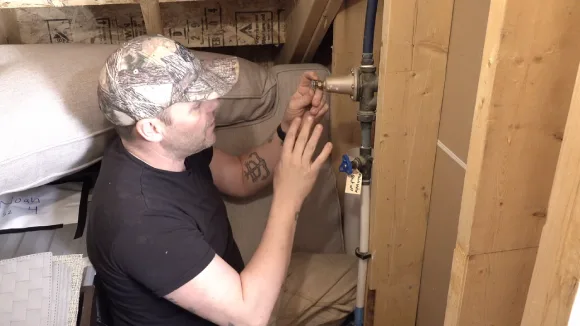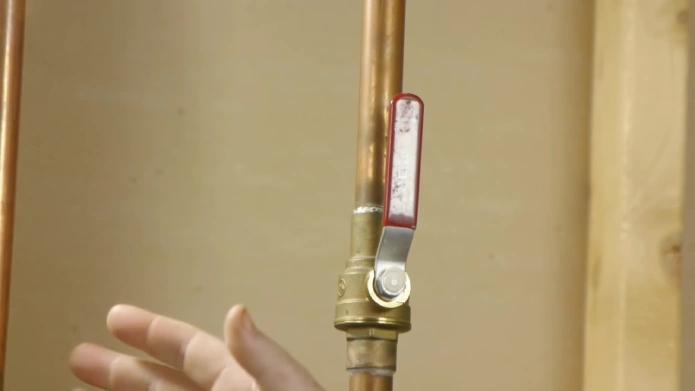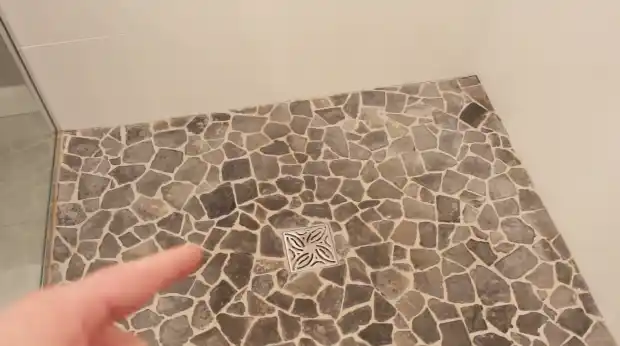Last Updated on May 3, 2023
Water pressure regulators ensure that the incoming water pressure remains safe and consistent. But unfortunately, these devices can sometimes make strange noises, such as moaning or whistling.
It’s normal for a water pressure regulator to make some noise, but if it’s too loud, then something could be wrong. This can happen because of water hammering, cavitation, problems with the valve, sediment buildup, or high incoming pressure.
Today we will explore the common reasons behind these mysterious noises and how to resolve these issues to restore peace and quiet in your home plumbing system. So, let’s dive in and unravel the mystery behind these noisy water pressure regulators.
Why Do Water Pressure Regulators Make Noise: 9 Reasons

The harmonious flow of water through our pipes often goes unnoticed, much like the silent symphony of an orchestra. However, concerns arise when the silent symphony becomes a cacophony of noise.
Let’s explore the various reasons behind the noisy predicament that water pressure regulators:
Improper Installation: The Root of the Problem
A poorly installed water pressure regulator can be the main culprit behind the loud noises you hear. If the regulator is not positioned correctly, excessive water pressure can cause whistling or hissing sounds in the system.
Also, the pipe’s size and material must be compatible with the pressure regulator, as an improper match might result in accelerated water velocity in the pipes, creating unwanted noise.
Incorrect Pressure Setting: A Delicate Balancing Act
Water pressure regulators should be set at the appropriate levels for optimal system performance. But incorrect pressure settings can lead to turbulent water flow, creating a cacophony of unpleasant noises that could reverberate throughout your home.
Examining your water pressure regulator’s settings and adjusting them according to manufacturer guidelines or expert advice is crucial in reducing noise and maintaining a peaceful living environment.
Water Hammering: A Sonic Boom in Your Pipes
Water hammering occurs when a sudden stop in water flow, such as closing a quick, reducing valve, generates high-pressure waves that can reverberate throughout pipes. The intense force produced by excessively high water pressure can cause the pipes to jerk violently, resulting in loud banging noises.
Waterlogged air chambers may further amplify the noise by disrupting the normal arrest of such pressure surges. Also, thermal expansion, which refers to the increase in the volume of water as it heats up, can raise the pressure inside the system and contribute to noisy disturbance.
Cavitation: Bubbling Trouble Brews

Cavitation is another common cause of noise in water pressure regulators. It refers to the formation and implosion of vapor bubbles within a high-speed water flow.
Abrupt fluctuations in pressure within the system can provoke the formation of these bubbles. When they ultimately collapse, they create powerful shock waves that emit loud, rattling sounds.
Aside from that, improper sizing of valves can further contribute to cavitation, as valves that are too small may accelerate the water flow rate and foster the formation of more bubbles, exacerbating the noise problem.
Valve Malfunction: The Misbehaving Maestro
The water pressure-reducing valve is the maestro that conducts the water flow in a system. When it’s offbeat, the whole symphony is affected. A malfunctioning valve may fail to regulate water pressure effectively, leading to fluctuations and noise.
Worn or damaged parts within the regulator may also cause it to vibrate, producing an audible hum or buzz. Regular inspection, maintenance, and replacement of faulty components can help keep the valve in harmony with the rest of the system.
Sediment Buildup: The Unwanted Crescendo
Accumulation of sediment and debris within the water pressure regulator can block the normal flow of water, creating turbulence and noise. The obstruction caused by sediment buildup can intensify pressure within the system and lead to a cacophony of vibrations and rattling sounds.
High Incoming Pressure: The Sound of Strained Pipes
When incoming pressure is excessively high, the water pressure regulator has to work harder and faster to control and reduce the pressure to a safe level. This heightened demand can stress the regulator, leading to noisy vibrations and humming sounds.
To counteract this issue, monitor the incoming pressure closely and, if necessary, install additional pressure-reducing devices to share the load and alleviate the strain on the regulator.
Water Supply Issues: A Sea of Problems Beneath the Surface
Sometimes, the source of the annoying noise might stem from external factors. Construction work or malfunctions in local water supply lines can cause transient pressure surges that intensify the sound emitted from your water pressure regulator.
Identifying and rectifying such external problems will require communication with local water authorities and may necessitate the installation of a pressure reducing valve (PRV) to maintain consistent pressure despite fluctuations in the water supply line.
Loose fittings: An Orchestra of Unwanted Sounds
Loose fittings, connections, or fixtures within the plumbing system can give rise to a symphony of disturbing sounds. As water rushes through the pipes, the vibrations can cause loose components to rattle, creating a noticeable racket.
To address this issue, a thorough inspection of all plumbing connections must be carried out to identify and tighten loose fittings, restoring silent harmony within your home.
Is Making Noise Normal for Water Pressure Regulators?

Generally, water pressure regulators should be relatively quiet, with the occasional faint hum. But they moan whenever they can’t send water pressure into the household because of clogs. If there is a loud moaning sound coming from the regulator, this could indicate an issue with the system.
The most common cause of a noisy regulator is a clogged line. This can block up the pipe and prevent water flow, leading to a backflow in pressure that manifests as a loud moaning sound.
Occasionally, debris or dirt accumulation inside the regulator itself could be causing the noise. Sediment buildup can make normal operation difficult for your regulator and cause excessive noise.
The Type of Noises Can Come From Water Pressure Regulator

Water pressure regulators can occasionally be sources of unwanted noise, causing a disturbance and concern for homeowners. By finding the types of noises emitted by water pressure regulators, homeowners can better understand how to diagnose and treat these auditory nuisances.
Here are some of the familiar sounds that can come from the regulators:
Mechanical Vibration Noise
A. Low-frequency vibration: Low-frequency vibration noise is often a result of loose components or an ill-fitted regulator. When water passes through the regulator, the internal components can vibrate, resulting in a low-frequency humming or thumping noise.
B. High-frequency vibration: This type of noise typically originates from the rapid oscillation of the pressure regulator’s diaphragm. An imbalanced or deteriorating diaphragm can lead to increased pulsations in the water flow, creating a high-pitched squealing or screeching noise
Fluid Dynamics Noise
A. Turbulence noise: This noise comes from irregularities in water flow caused by constrictions, obstructions, or abrupt changes in the path of water within the regulator. The disturbance of the flow creates audible gurgling, splashing, or hissing sounds.
B. Cavitation noise: Cavitation noise occurs when rapid pressure drop within the regulator causes vapor cavities in the fluid. As these cavities collapse, they release energy through shock waves, resulting in loud, erratic knocking or rumbling noises.
Cavitation can damage the regulator and associated components and may require adjusting the pressure settings or installing a larger-sized device to accommodate the flow rates.
Aerodynamic Noise
Aerodynamic noise results from rapid air and water interactions in the regulator. Depending on the system’s flow rates and pressure differentials, it can manifest as high-pitched whistling, hissing, or roaring sounds. Several factors can contribute to aerodynamic noise, including pipe size, valve placement, and regulator settings.
How Can I Stop My Water Pressure Regulators From Making Noise?

Here are some practical ways to stop your water pressure regulators from generating noise:
Properly Adjust the Pressure
Water pressure regulators powerfully impact the water pressure flowing through your plumbing system. If the pressure is too high, it could cause vibration and noise when water flows through the lines.
To adjust the pressure, locate the regulator valve (usually found near the main water shut-off) and turn the adjusting screw clockwise for higher pressure or counterclockwise for lower pressure until you achieve the desired level.
Check and Tighten Fittings
Loose fittings are a common culprit behind the noise in water pressure regulators. As water travels through the plumbing system, loose fittings can cause pipes to vibrate and produce an annoying sound.
Use a wrench to secure the connections and consider replacing any worn or damaged fittings to eliminate noise from your water pressure regulators.
Insulate Pipes to Quiet the Roar
Wrap pipes securely with insulation, focusing on joints and connections while ensuring that the material does not directly touch the regulator, as this may inhibit its ability to function effectively. Insulating pipes play a significant role in stopping your regulators from making unwelcome noise.
Install Water Hammer Arrestors
Installing water hammer arrestors can help mitigate the loud thudding sound in pipes. These devices feature air-filled chambers that absorb the shock caused by the water hammer, thus reducing or eliminating noise.
Place arrestors near the water pressure regulators, at hot water tanks, and directly where appliances connect to the water supply, such as washing machines and dishwashers.
Install a Noise-Reducing Valve
Installing a noise-reducing valve is one of the simplest ways to reduce noisy water pressure regulators. To install the valve, shut off the main water supply and remove any existing devices before connecting. Once connected, turn on the main water supply and adjust the settings as necessary for the best results.
Clean the Pressure Regulator
Over time, sediment can accumulate in your water pressure regulator, which can cause it to become noisy. To prevent this from happening regularly, cleaning your regulator once every few months using warm soapy water and a brush specially designed for cleaning valves and regulators is essential.
Replace the Malfunctioning Regulator
If none of these solutions resolve your noisy regulator issue after trying them multiple times, consider replacing them with a new one. You can install the regulator yourself if you are familiar with the installation processes.
Tapping Into Trouble: Listen for Noises to Keep WPRs Running Smoothly
Keeping a keen ear for any irregular noises emanating from a water pressure regulator can be crucial in maintaining an efficiently running plumbing system in one’s home. You can take swift and decisive action when understanding what causes such disturbances.
Undertaking regular maintenance, scheduling professional inspections, and fine-tuning the water pressure regulator can significantly mitigate these issues. Taking care of these concerns early on can lead to a quieter, more efficient, and healthier water system, giving you and your family peace of mind.



